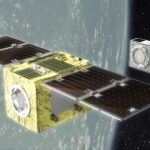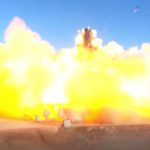Satellite swarms may outshine the night sky’s natural constellations0
- From Around the Web, Space
- September 24, 2021
“Mega-constellations” from those satellites will be visible to the naked eye, simulations suggest

“Mega-constellations” from those satellites will be visible to the naked eye, simulations suggest

Jared Isaacman, Hayley Arceneaux, Christopher Sembroski and Sian Proctor are to be launched into orbit

NASA and SpaceX will stand down until Nov. 1.

It’s a “dream come true” for the SpaceX founder who has his sights set on Mars.

SpaceX has successfully conducted a three-engine “static fire” test on the third iteration of its Super Heavy booster, one of the key components behind its ambitions for interplanetary travel.

SpaceX managed to land its prototype Starship rocket at its Texas base without blowing it up on Wednesday, the first time it has succeeded in doing so in five attempts.

It’s invisible in the night sky, but above us there is a cloud of more than 9,000 tons of space junk — equivalent to the weight of 720 school buses.

SpaceX launched a prototype Starship rocket Tuesday from its Boca Chica, Texas, flight facility, successfully sending the silver booster up to an altitude of about six miles as planned. But the unpiloted test flight ended with a spectacular explosion when the rocket failed to right itself and slow down enough for a tail-first landing.

So many things launched into space this year: Six humans traveled aboard commercial crew vehicles, three spacecraft began journeys to Mars and several hundred distractingly shiny satellites took to the sky.

SpaceX’s Starship SN8 has exploded on landing, after reaching a height of 12.5 kilometers (7.8 miles) in its first high altitude test flight. The complete destruction of the spacecraft is not quite the setback for Elon Musk’s plans to colonize Mars it might seem. The chance of a successful landing were considered slim, and the company is hailing the rest of the flight a success.